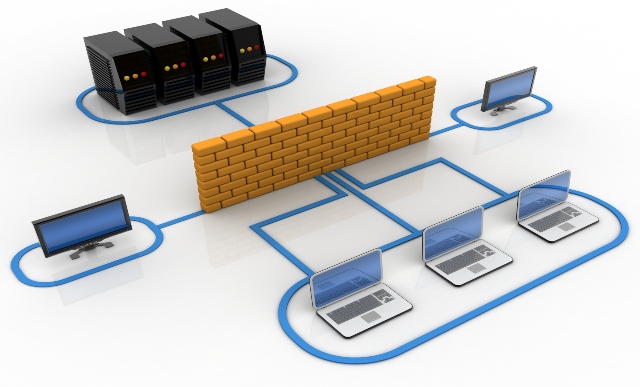IBM Cloud for SAP Applications Start-up Bundles: What You Need to Know
Run Preconfigured Products as a Proof of Concept
Joe Gallego of IBM joins SAPinsider for a podcast to discuss IBM Cloud for SAP Applications Start-up Bundles, touching on the benefits of performing proof of concepts with the latest SAP products in pre-configured, ready-to-go packages.
Below is a slightly edited transcript of the conversation.
Ken: Hi, this is Ken Murphy with SAPinsider. Joining me on this podcast today is Joe Gallego of IBM, and Joe is here today to talk with us a little bit about IBM Cloud for SAP Applications. Joe, thanks for joining me this morning.
Joe: Thanks Ken. Thank you for having me.
Ken: Joe, can you introduce yourself and your role with IBM?
Joe: Well, I’m Joe Gallego. I’m one of the Offering Managers for IBM Cloud for SAP Applications, and will have been working with SAP for almost 18 years.
Ken: Great, and can you tell our listeners a little bit about IBM Cloud for SAP Applications? Specifically how it address some of the common pain-points that SAP customers have in running their SAP applications.
Joe: Well, when we started with this offering almost 5 years ago, we thought about the common challenges that SAP customers have when running SAP. For example, the exponential growth in infrastructure, the need for security – since the customers that run SAP run their core business processes in SAP, so it has to be secured and has to be resilient – and also another one of the typical challenges is really the skills. Having the skills to keep up with the latest products and having the people to manage these latest products was another thing we had thought about. So we used all of these—and of course the cost—so we used all of these pain-points as design-points to build this offering, and hopefully this is the value in this offering, to help overcome these challenges.
Ken: So what is the IBM Cloud for SAP Applications Start-Up Bundles, and is that an entry-point for clients to experience this offering, IBM Cloud for SAP Applications?
Joe: Yeah. Well this is something new, right? We announced it in April, and we’re very excited about it. This is also trying to help customers with another challenge, which is: “I’m running SAP and currently in a stable-steady state, but I’m thinking of moving to S/4HANA or new products—right, I’m thinking of new products and I would like to try that first before starting it.” So Start-Up Bundles, these are preconfigured, pre-installed, managed SAP bundles that you can consume in the cloud with the latest SAP products, for example, S/4HANA Simple Finance. So if you are running SAP and thinking about going to Simple Finance, well, this is a very simple way of trying and testing Simple Finance without having to invest in having the infrastructure or getting the skills because it is a managed service. So you don’t have to worry about installing the product and having the skills to manage S/4HANA because this is already managed and it comes with SLAs.
Ken: You mentioned S/4HANA Finance. Was the idea behind the start-up bundles in response to customers asking how to experience SAP HANA in particular?
Joe: S/4HANA or Simple Finance is one of the–it’s a very popular product. But we also have two more bundles: we have ERP on HANA and we also have BW on HANA. So these are the three bundles that we’re starting with, and you could try any of these or all three if you want to. The intent of these is not really going to be to use them for production. It’s really for a POC you can try this per month, right? It is a per month billing. If you like it, IBM will take that into a non-production system in the IBM Cloud, and we’ll migrate that from the start-up bundles to the non-production system at no cost.
Ken: So you said S/4HANA, ERP on HANA (or Suite on HANA), and BW on HANA?
Joe: Those are the three—we have S/4HANA, Simple Finance, then there is ERP on HANA, and BW on HANA.
Ken: Right.
Joe: Those are the three that we are starting with. Another thing that I wanted to mention: they’re all run on virtual HANA. The current size is on 512GB. But we are thinking of having new sizes just in case customers wanted all of our sizes or maybe even bigger.
Ken: Now, your typical customers are already running these solutions on-premise and are wanting to experience the cloud managed services? Or do you find customers buying new products and then wanting to sort of test-drive them in the cloud?
Joe: Well here, I think the good thing is that you get both, 2-in-1. You get to try the latest product, and not only that, you are also able to experience cloud managed services. So you get the best of both. In a sense, you could do the POC and customers can try all the functionality that comes with these newer products and on the other hand also experience the service and see how it works—how the SLAs, how the managed services work on cloud—so that you can focus on the business and not that much on running it.
Ken: So you said that customers that go with the start-up bundle route for one of those three applications and like what they see and like managed services, then you can move that into a non-production environment?
Joe: Exactly. So after you do a POC, let’s say for like 3 or 4 months, after that period of time, if the customer says, “Hey, this is interesting. Let’s move forward,” what we’ll do is we’ll take this from this POC environment—start-up bundles are meant for POCs, right?—so we will take whatever the customer has in these start-up bundles that they’ve been doing there for those 4 months, and we will migrate that start-up bundle to a non-production system where you can start the implementation.
Ken: How long, then, does it take to be up and running in a start-up proof of concept?
Joe: Well, normally, we would be able to have this up and running from the moment you sign the contract in less than a week. This is quite fast considering that this is a managed service. It’s not only infrastructure-as-a-service, it’s not only platform-as-a-service where you get the product, but also a service that is managed. And you get SLAs, and you have people that are there to help you with whatever you need.
Ken: Let’s talk a little bit about the benefits then.
Joe: Some of the benefits, for example, are that you can try the latest products without having to move everything or invest in having that infrastructure, without having to go through that CAPEX. You can now directly consume it and have it up and running in less than a week. You can take your data there and do a POC for a few months, and if you like it, you can stay. And another benefit is that you could do two things after the POC period or the trial period is over: you can either continue (and then IBM will, as mentioned before, take that bundle and turn that into a non-production system) at no cost, or, if the customers decides not to continue, there is no minimum term (it’s 3 months, but after that you can cancel at any time).
Ken: And Joe, how does it work? Not just from getting started, but the customer experience behind it. What does that entail?
Joe: Well basically, it’s simple. Customers, once you sign the contract—there’s a very simple contract with IBM Cloud for SAP—the customers get an SSL Certificate and they get an IP Address from IBM. So they get these two things, and with that you get assigned what we call a “jump server”. And through that jump server, you can access the bundle that you have purchased, or bundles that you, that the customer, would like to try. And they don’t need a VPN, they don’t need, obviously, an MPLS or anything like that, it’s very simple. With this SSL Certificate and with this IP Address, they basically access through a subnet—they would have access to the bundles that they have purchased. And they could have several users for the POC with this same process.
Ken: At the top of the call, you said that IBM Cloud for SAP Applications, the service, started about 5 years ago. Do you see a comparison between then and today? Is there a lot more customer interest with—you hear a lot from SAP about the digital economy and customized products and, of course, sensor technology—does all of that and those technologies lead to a greater demand for cloud-managed services? Is that what you are seeing?
Joe: There is a change, right? When we started about 5 years ago, the focus was really on cost-reduction. And this is still the case, but customers are now seeing it from a different perspective. They are focusing more on business agility. They are using this as part of their digital transformation. Cost reduction is still there. The focus is shifting, and we are expanding the value proposition within this offering.
Ken: And Joe, how do customers who want to experience S/4HANA, or, again, Suite on HANA, or BW on HANA in this start-up bundle—how do they get started on that?
Joe: There are several ways. They can contact their IBM sales rep if they are an existing IBM customer. They can also do this through the IBM website; they can go to “Cloud-Managed Services” and they will find the start-up Bundles, and from there they could just ask a question or chat or send an email. There’s three ways. They either can through the IBM Cloud Sales Rep, through sending an email, or using the chat service.
Ken: Joe, thank you for joining us this morning.
Joe: Oh, thank you!
Ken: Again, this is Ken Murphy with SAPinsider, and we have been chatting with Joe Gallego of IBM.








